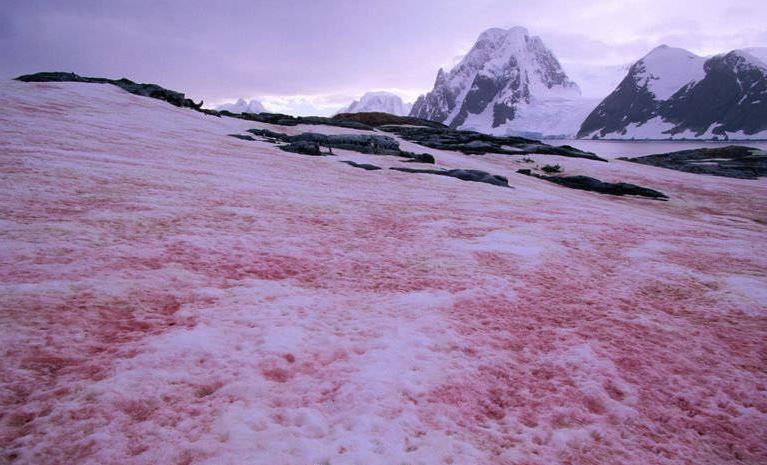“Red Snow Scenes” Frequently
In fact, this is not the first time that Antarctica is covered with red snow. On February 28 last year, the phenomenon of “watermelon snow” was found at the Antarctic Ukrainian scientific research station.
Pink glaciers also appeared in the European Alps last August.
According to Russian media analysis, discoloration may be the result of microalgae reproduction. For example, it is the carotenoids in “snow coated algae”.
Researchers said that the rising temperature in Antarctica provides conditions for algae growth, which may cause the melting of polar ice and snow to get out of control, which should be paid attention to.
What is “snow coat algae”?
Unlike most algae, snowcoat algae are very cold-resistant and widely distributed in extreme ice and snow environments such as the Arctic, Antarctica and its islands, and the Alps. Although these snow coated algae themselves are not harmful, they are the driving driver behind accelerating the melting of glaciers.
In the cold winter, they are in a state of hibernating stillness, but once the sun is warm enough, the algae begins to recover “spring”.
Young snow coats are green, and when they mature, they produce red carotenoids, which makes them appear “watermelon color” from green to red.
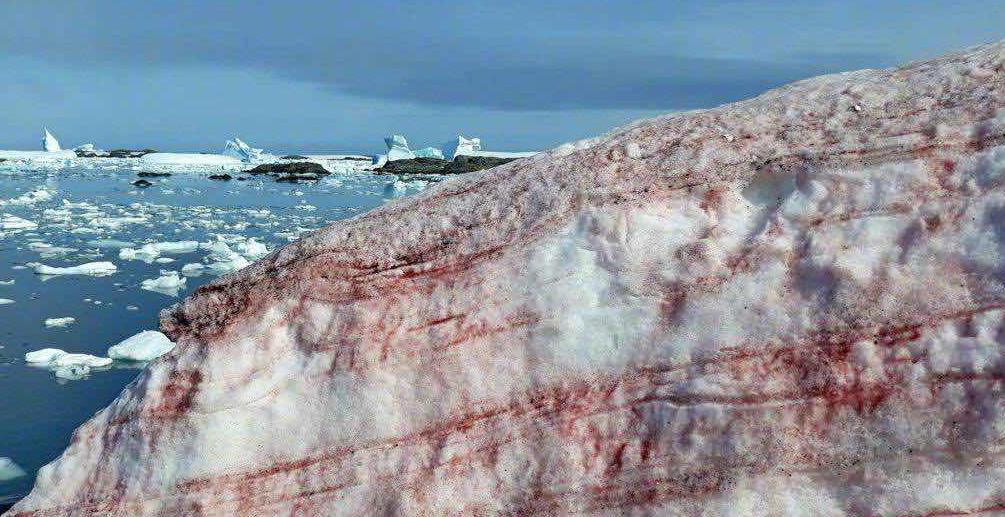
A 2016 study showed that during a snowmelting season in the Arctic, algae blooms produced by snow coats reduced the amount of sunlight reflected by snow by 13%, which would lead to higher snow melting speed.
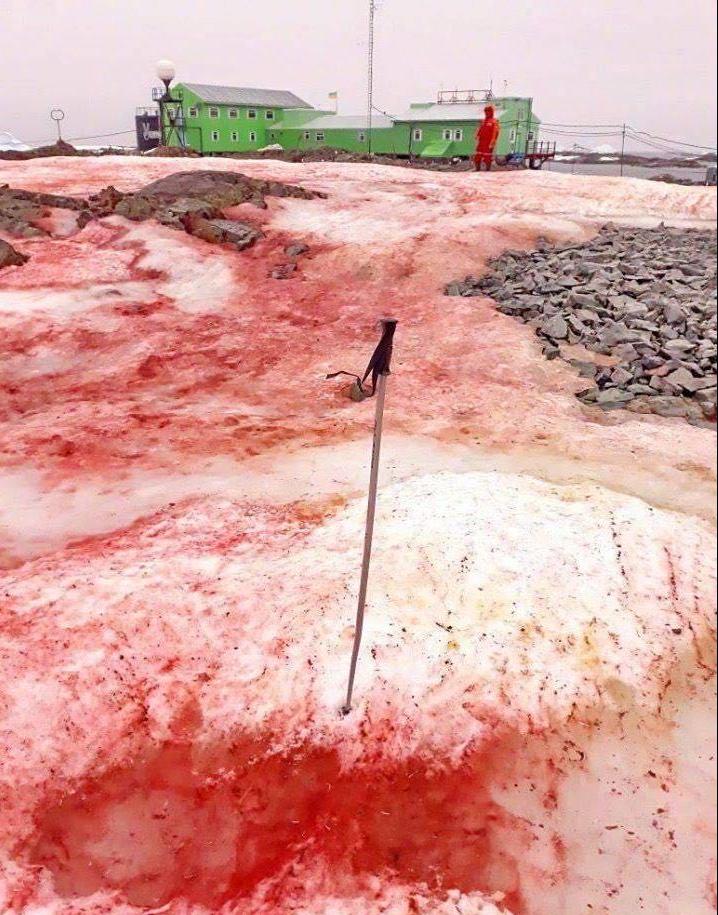
What’s the trouble caused by global warming?
In fact, the proliferation of snowcoat algae and the melting of glaciers are closely related to global warming.
Data shows that the temperature in Antarctica rises at a rate of 0.6°C every decade, and Antarctica’s climate warming is more than three times faster than that of the world. In February 2020, scientists detected that the temperature in Antarctica was as high as 20.75 °C at the northern end of Antarctica.
According to the Global Remote Sensing Monitoring of the Ecological Environment 2020 Annual Report, from 1999 to 2019, the surface of the Antarctic ice sheet melted significantly, with a melting area of 2.634 million square kilometers, accounting for about 19% of the total area of the Antarctic ice sheet.
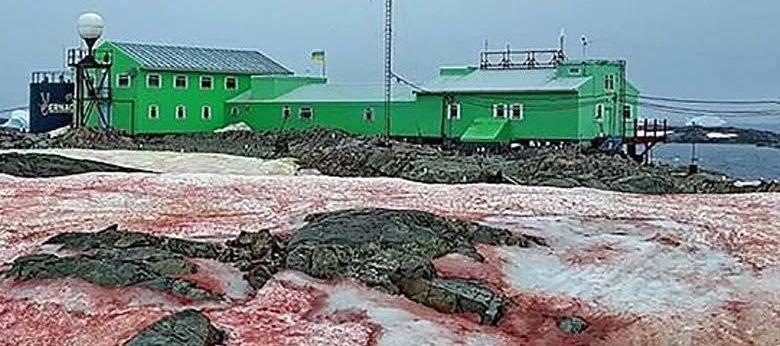
When the snow melts slightly in the sun, the snow coat will immediately wake up from the dream. In order to resist the strong ultraviolet rays reflected by snow, they will produce a variety of red pigments such as carotenoids, forming the legendary “watermelon snow”.
Snow coat algae will increase the melting snow in Antarctica, which in turn aggravates its growth and forms a vicious circle.” Watermelon snow” will reduce the reflection of sunlight, and the large-scale occurrence will exacerbate climate warming and threaten ecosystems.
Is the situation in Antarctica really that bad?
In fact, only some parts of Antarctica, especially the area near the north, have rapid warming, but the whole is still in the process of slow change.
→Is the temperature more than 20 degrees Celsius? Single point, not whole
On February 9 last year, Brazilian soilologists observed 20.75 degrees Celsius at the Marambio scientific research station on Seymour Island Argentina, outside the northern tip of the Antarctic Peninsula, up nearly 1 degree from the previous peak of 19.8 degrees Celsius. It is also the first time that the temperature in Antarctica has exceeded 20 degrees Celsius.
But Seymour Island is on the outer island at the northern end of the Antarctic Peninsula, which does not belong to the real Antarctic continent. Secondly, this region is the northernmost part of the Antarctic Peninsula and belongs to the relatively warmer region, so the temperature here cannot represent the temperature of 14 million square kilometers of Antarctica.
△Picture from the official account of the Chinese Academy of Meteorological Sciences.
At the same time, on the other side of the Antarctic Peninsula, on the South Shetland Islands across the sea, the Great Wall of China at similar latitudes stood at 8.7 degrees Celsius on the same day, which did not break through the historical high of 11.7 degrees Celsius in 1989, which also showed that this temperature was only a single-point temperature record.
△Picture from the official account of the Chinese Academy of Meteorological Sciences.
In some parts of the west coast of the Antarctic Peninsula this year, the breeding of snow-clad algae in summer is indeed much more obvious than last year. Snow-clad algae really exists and is also risky. But whether it is large-scale and long-term, it needs more regional data support, and it cannot be concluded immediately.
→ The number of penguins has plummeted by 75%? Normal fluctuation of population
△The title of an article on an official account last March.
The warming of Antarctica has had a certain impact on organisms. There are some reports that “the number of penguins has plummeted by 75%, the number of krill has dropped by 80%, and penguins lie on the ground as if they are sad about the death of their children…”
△A certain official account caption.
According to long-term research by scientists, the number of the three tail-sweeping penguins on the Antarctic Peninsula has indeed changed, but in general, some have moved to the Antarctic and some have gone to colder areas. Some areas have increased some kinds of penguins, and some have decreased. It’s all normal fluctuations.
△The picture comes from National Geographic of China.
Penguins lying on the ground because of sadness are completely wrong interpretation. Travelers to the Antarctic Peninsula often meet penguins lying on the ground, who mostly rest.
Because of iceberg obstruction, annual changes in krill, or certain diseases, there have indeed been population deaths of penguin cubs in some habitats. However, this change in individual habitat does not have a decisive impact on the change of the population as a whole.
Respect for science still needs to sound the alarm bell.
Through long-term data monitoring, scientists have drawn up this map of temperature changes throughout Antarctica.
It can be seen from the picture that the temperature in most parts of Antarctica has not changed significantly, and the increase is less than 0.25 degrees, while the temperature in the interior of Antarctica, especially on the Antarctic plateau, is falling. In the red part of the Antarctic Peninsula region, the surface temperature is 3.5 degrees higher than that of 1957. This is a very obvious change of data.
However, Antarctic climate warming is a long-term and slow process. On the one hand, it is necessary to avoid deliberately exaggerating its severity and causing panic. On the other hand, it is also necessary to be alert to temperature changes and pay attention to the real ecological status of Antarctica.
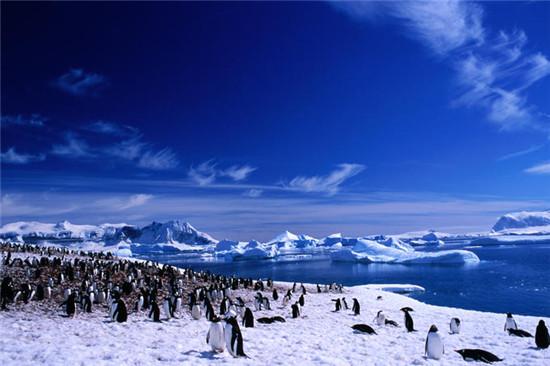
“Watermelon Snow” is not romantic. Antarctica is a pure land on earth, and it is the common responsibility of mankind to protect her. We should always be vigilant and do what we can on the basis of respect for science.


